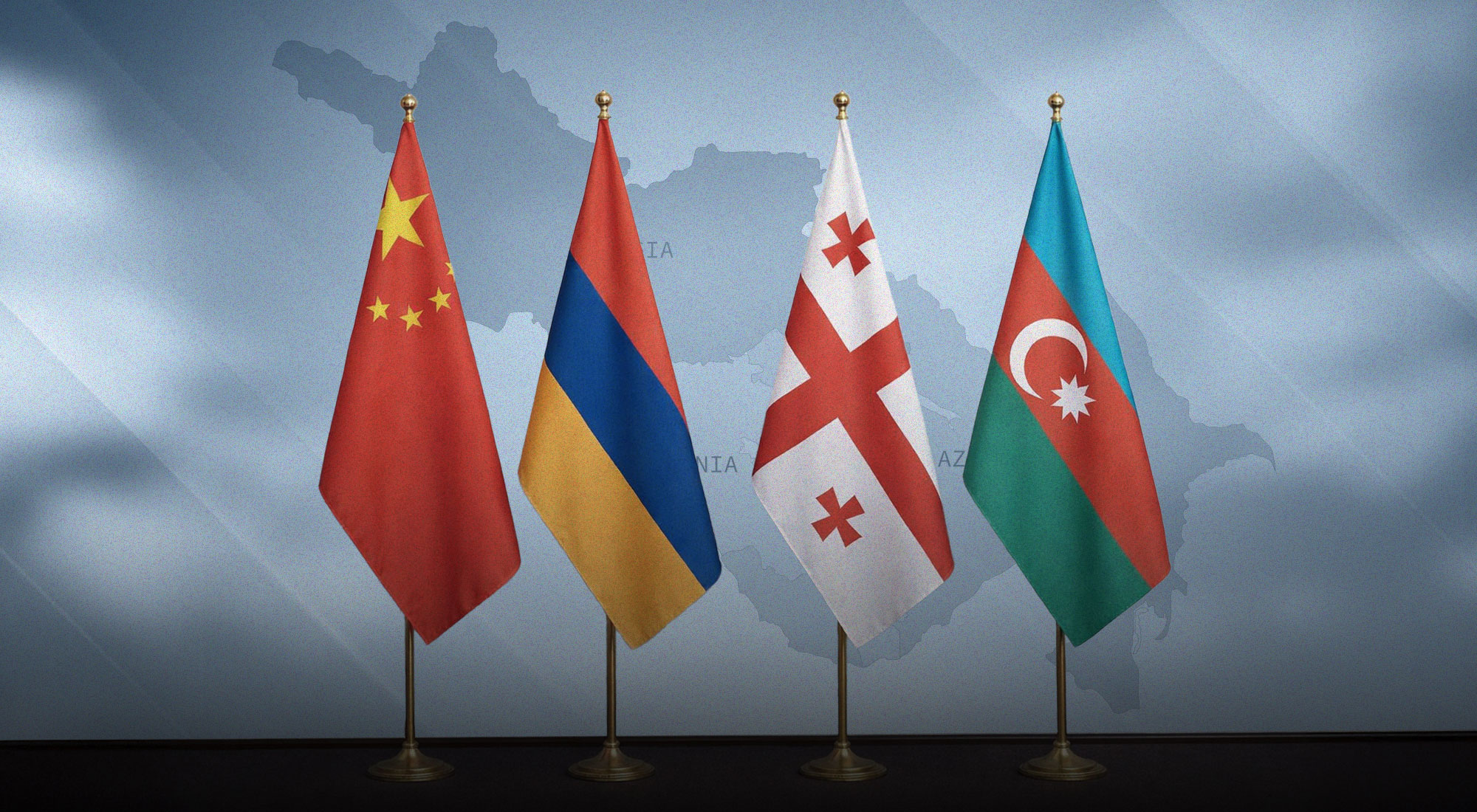Embracing economic diversification entails the transformation of an economy, transitioning from a sole revenue source to a multifaceted income generation model that covers an expanding array of sectors and markets. Historically, this approach has been harnessed as a pivotal strategy aimed at fostering constructive economic progress and advancement.[1]
In today’s interconnected world, the global oil market stands as a major force, influencing economies, governments, and industries across the globe. Its profound impact on economic stability and development cannot be overstated. However, uncertainty is the only constant in this equation as we approach a new era marked by rapidly changing dynamics. The title of this insight, ‘Economic Diversification to Face Global Oil Market Uncertainty,’ aptly captures the essence of the challenge that countries and businesses must confront. The core aim of this study is to showcase the crucial importance of economic diversification for a sustainable economy that can face the uncertainty of global oil markets with reduced risks.
In this insight, first we will assess the risks and challenges associated with oil market revenues, as well as the implications of market uncertainty for national economies. We will also explore the possible risks of having an economy heavily dependent on a single industry and the difficulties it brings when oil prices fluctuate. Moreover, we will analyze how a diversified economy is more resilient to oil market fluctuations and economic shocks. This theory will be supported by a case study of a country. Moving forward, we will discuss how economic diversification can be linked to sustainable and environmentally friendly industries, reducing the environmental impact of a region’s economy. Finally, based on the the results of the analytical study conducted for this paper, we will provide some observations and recommendations for the future.
Resource dependency
In order to carry out a comprehensive examination of the risks associated with an excessive reliance on oil revenues and to understand the implications of market uncertainty on the economies of nations, it is imperative to delve into the intricate network of potential challenges that could affect a nation that is heavily dependent on this finite resource, as well as the challenges faced by economies that rely on oil revenues.
Oil revenues serve as a significant and powerful economic resource. Nonetheless, relying heavily on this source poses risks like those associated with depending solely on any other economic revenue stream. So, it is crucial to acknowledge the undeniable significance of oil in contributing to economic prosperity. As a formidable economic driver, oil revenue has played a pivotal role in funding infrastructure, public services, and development initiatives. However, an overreliance on this singular source of income comes with inherent risks and challenges. Understanding these challenges is essential for policymakers, economists, and stakeholders alike, as it paves the way for informed decisions and strategies to build a more resilient and diversified economy.
Figure 1: Crude oil prices 1970 – 2022*
This figure illustrates the volatility of crude oil prices over the last 50+ years, highlighting how various factors have led to dramatic changes in price during this period. A significant peak is observed around 2008, which is likely related to the high oil prices during that period before the global financial crisis. The figure ends with a notable increase in 2022, which could be indicative of recent market conditions.
*Source : 2023 Statistical Review of World Energy, Energy Institute, https://www.energyinst.org/statistical-review.
One of the most important and common challenges faced by countries when depending on oil revenue as a source of income is economic instability. The boom-and-bust nature of the oil industry can lead to economic instability. During periods of high oil prices, there may be a surge in revenue, but when prices fall, it can result in budget deficits, economic downturns, and increased national debt. Empirical evidence underscores the resilience of countries with a diversified economic structure when confronted with external shocks. The global financial crisis of 2008-09 serves as a notable example, wherein economies boasting a more varied export profile demonstrated superior resilience to the tumultuous waves of international trade shocks.
Notably, nations with a complex economic structure tend to exhibit lower output volatility, and this characteristic extends to a reduction in the variability of government revenue. Examining the period between 2005 and 2014, the heightened volatility in both output and government revenue within oil-exporting Arab economies can be attributed, at least in part, to a limited degree of economic diversification and a consequent heavy reliance on oil. Consequently, fostering macroeconomic stability through judicious economic and financial policies becomes imperative for cultivating a robust and diversified non-oil sector. This emphasis on stability is foundational for steering these economies away from the pitfalls associated with overdependence on a single revenue source.[2] In instances of economic instability, repercussions are an inherent outcome of such circumstances.
Figure 2: Oil rents in GCC economies (% of GDP) *
This figure shows the oil rents for six Gulf Cooperation Council (GCC) countries as a percentage of their gross domestic product (GDP) from 2000 to 2020. Oil rents are the income a country receives from its oil and gas production after deducting the costs of production. As shown in the figure, the oil rents for all six countries fluctuated greatly over the 20-year period. Oman had the highest oil rents as a percentage of GDP in 2000, at around 60%, while Bahrain had the lowest, at around 10%. In 2020, Oman again had the highest oil rents as a percentage of GDP, at around 40%, while Qatar had the lowest, at around 5%. The fluctuations in oil rents are largely due to changes in oil prices. When oil prices are high, oil rents are also high. When oil prices are low, oil rents are also low. For example, the oil price crash of 2008-2009 led to a sharp decline in oil rents for all six GCC countries.
*Source : Data Bank : World Development Indicators, The World Bank, https://databank.worldbank.org/source/world-development-indicators#
While most of the challenges rest under the umbrella of the market’s uncertainty, it is important to recognize the significance of global uncertainty and dig deeper into the current state of affairs globally.
Unprecedented levels of global unpredictability emerged during the initial stages of the COVID-19 outbreak and persist at elevated levels. The World Uncertainty Index, a quarterly metric encompassing 143 nations and gauging global economic and policy uncertainty, reveals that although uncertainty has diminished by approximately 60 percent since its peak in the first quarter of 2020, it remains about 50 percent above the historical average recorded from 1996 to 2010.[3] The World Uncertainty Index serves as a barometer for the challenges nations face, illustrating that, despite some moderation, uncertainty levels continue to surpass historical averages. This uncertainty translates into increased economic risks for oil-dependent nations, as fluctuations in global demand, supply disruptions, and geopolitical events contribute to an environment where revenue projections become exceedingly difficult.
The figure above shows the Global Uncertainty Index from 1996 to 2020, along with some major events that are thought to have contributed to changes in the index. For example, the 9/11 attacks and the US recession in the early 2000s are associated with spikes in the index.
In such circumstances, the ability of oil-dependent countries to navigate through economic downturns is severely tested. The connection between market uncertainty and economic instability becomes starkly apparent as these nations grapple with budgetary shortfalls, increased debt burdens, and a hampered capacity to fund crucial development projects. Policymakers must confront the dual challenge of managing the inherent risks associated with oil dependency while simultaneously responding to the broader uncertainties of the global market. Thus, understanding the interplay between market uncertainty and the economic well-being of nations heavily reliant on oil revenues is paramount for devising effective strategies that promote resilience, diversification, and sustained economic growth.
Economic resilience
A closer look at the concept of economic resilience reveals the critical role that diversification plays in helping an economy navigate the rough seas of shifting oil prices and larger economic shocks. A diversified economy, one that doesn’t solely hinge on oil revenues, is inherently more resilient due to its ability to weather shocks in various sectors. The diversification strategy involves developing alternative sources of income, such as manufacturing, technology, or services, which acts as a buffer against the volatility inherent in the oil market. Countries or regions that have successfully diversified their economies showcase a more stable economic landscape, demonstrating a capacity to withstand external shocks.
Consider the case of Norway as a prime example. Historically reliant on oil revenues, Norway strategically invested its oil wealth in a sovereign wealth fund, the Government Pension Fund Global. This fund, diversified across global assets, has insulated the Norwegian economy from the direct impacts of oil price fluctuations. Despite being a major oil exporter, Norway’s diversified approach has resulted in sustained economic stability, evident in its ability to weather the oil market’s ups and downs. As part of its Climate Action Plan for 2021-2030, Norway is undertaking a significant transition from fossil fuels and nuclear energy to renewable sources in pursuit of its emission reduction target of 55% by 2030. This represents a considerable challenge for Norway, being the 13th-largest oil-producing nation globally.
The government’s strategy involves a gradual increase in taxation for non-ETS greenhouse gas emissions, reaching NOK 2000 per tonne of CO2 equivalent by 2030. To complement this initiative, the tax structure for vehicles is structured to favor emission-free options, and there is a plan to phase out the sales of all new fossil-fuel vehicles by 2025.[4] The economic implications of these measures signify a shift in Norway’s economic focus, transitioning from dominant sectors like oil and gas to sustainable alternatives such as offshore wind and hydroelectric energy. To promote economic diversification, financial support is allocated for the advancement of new technologies, fostering innovation, and supporting research initiatives.
The above figure indicates that oil rents, which are the income Norway receives from its oil and gas production after deducting the costs of production, have been a major source of revenue for the country, accounting for a significant portion of its GDP throughout the period from 2000 to 2022. Oil rents have a significant impact on the current account balance. When oil rents are high, the current account balance tends to be higher as well. This is because the additional income from oil exports increases the value of Norway’s exports relative to its imports. The figure shows that oil rents have been a major driver of Norway’s economy over the past two decades. However, the current account balance has also been affected by other factors, and it is important to consider all of these factors when analyzing the Norwegian economy.
*Source : Data Bank : World Development Indicators , The World Bank https://databank.worldbank.org/source/world-development-indicators#
In contrast, Nigeria provides an example of a nation that is heavily reliant on oil. When the country gained independence in 1960, its primary sources of income were agriculture and the extraction of solid minerals. However, the discovery of petroleum resources in the 1960s, coupled with the burgeoning global demand for oil, led to Nigeria’s excessive reliance on petroleum. This shift led to a gradual yet consistent neglect of sectors such as agriculture and other components of the economy. Presently, petroleum constitutes more than 90% of Nigeria’s export revenue and over 80% of the government’s budget.[5] Despite being a significant oil producer, Nigeria has faced economic challenges marked by fluctuations in oil prices. The country’s heavy reliance on oil revenues has contributed to fiscal vulnerability, budgetary constraints, and economic downturns during periods of oil market volatility.
This figure shows Nigeria’s economic story from 2000 to 2022: oil wealth, once a gushing fountain at 15% of GDP, has dwindled to a trickle at 5%. Meanwhile, the trade balance, once overflowing with surplus, now runs dry at a -5% deficit. This reliance on oil leaves the budget strapped as imports outpace exports, prompting policymakers to search for lasting solutions beyond the boom-and-bust cycle of oil prices.
*Source : Data Bank : World Development Indicators, The World Bank, https://databank.worldbank.org/source/world-development-indicators#
The comparison of Norway’s and Nigeria’s economic stability demonstrates the critical role of economic diversification in bolstering resilience against external shocks. Norway, with its diversified economy, emerges as a notable example of a nation that has successfully navigated economic challenges. The incorporation of various income sources and industrial sectors, including offshore wind energy, hydroelectric energy, and high-tech industries, has equipped Norway with a more stable and adaptable economic framework. The resilience demonstrated by Norway in the face of global uncertainties and oil market fluctuations underscores the benefits of reducing dependence on a single revenue stream.
In contrast, Nigeria’s heavy reliance on oil exposes it to heightened economic vulnerabilities. The stark fluctuations in oil prices and the limited diversification of its economic base contribute to fiscal instability, budgetary constraints, and economic downturns. The economic challenges faced by the African country underscore the urgency for nations heavily dependent on oil to reassess their economic strategies. Implementing robust diversification initiatives becomes imperative to enhance economic resilience and mitigate the inherent risks associated with the volatility of the oil market. The divergent trajectories of Norway and Nigeria underscore the transformative impact of diversification on economic stability. Beyond merely weathering shocks, diversified economies are better equipped to seize opportunities and sustain growth in the face of evolving global economic dynamics.[6] Policymakers in oil-dependent nations are urged to consider the success of diversified economies as a compelling case for embracing change, fostering innovation, and cultivating a more resilient economic landscape that is less susceptible to the perils of overdependence on a single sector. In essence, the lessons drawn from these comparative cases emphasize the strategic importance of economic diversification in building a resilient and adaptable foundation for sustained economic prosperity.
Sustainability
The intertwining of economic diversification and environmental sustainability represents a forward-thinking approach that extends beyond economic resilience to address the pressing concerns of ecological impact. Countries engaged in diversification, as exemplified by Norway’s strategic investments in renewable energy, are not only enhancing their economic stability but also actively contributing to global environmental objectives. The deliberate shift toward sustainable and environmentally friendly industries, such as offshore wind and hydroelectric energy, reflects a commitment to reducing the carbon footprint associated with traditional sectors like oil and gas. As we see in the Norwegian economy, the government is currently in the process of establishing a licensing framework for offshore wind projects, with the ambitious goal of completing the first major offshore wind project before 2030. Additionally, the Norwegian government is actively supporting international collaborations and various research and development endeavors, particularly in the realms of blue and green hydrogen. These concerted efforts aim to reduce Norway’s reliance on fossil fuels over the long term, fostering a diversified economy. The envisioned industries are positioned to be future-ready by supplying green energy, marking a strategic move towards sustainability and climate resilience.
In this transformative journey, economic diversification serves as a catalyst for the development of industries that prioritize eco-friendly practices. By promoting the growth of green technologies and sustainable initiatives, diversified economies can substantially reduce their environmental footprint. This shift not only aligns with international climate goals but also positions these nations as leaders in sustainable development. Moreover, the emphasis on environmental sustainability within diversified economies offers a promising model for balancing economic growth with responsible resource utilization.[7]
As countries explore diversification strategies, they have the unique opportunity to cultivate industries that contribute positively to the planet’s well-being. The synergy between economic diversification and environmental sustainability emphasizes the interconnectedness of economic, social, and environmental goals. It underscores the imperative for nations to not only fortify their economies but also proactively address environmental challenges, thereby fostering a harmonious and resilient future. This harmonization of economic and environmental objectives represents a progressive paradigm that recognizes the intrinsic link between sustainable development and the well-being of both economies and ecosystems.
Conclusion
In conclusion, the exploration of economic diversification and its intricate relationship with market uncertainty underscores its paramount importance in steering nations towards resilience, sustainability, and long-term prosperity. The global oil market, a significant economic force, remains a source of both opportunity and vulnerability. As we navigate through the uncertainties of the modern era, economic diversification emerges as a strategic imperative, offering a shield against the unpredictable fluctuations of the oil market.
The inherent risks associated with overreliance on oil revenues are evident in the economic instability experienced by nations, such as developing countries, where a single or two revenue sources dominate. The boom-and-bust nature of the oil industry exposes countries to budget deficits, increased debt burdens, and economic downturns during periods of volatility. On the contrary, the success story of Norway showcases the transformative impact of economic diversification. By strategically investing in renewable energy and fostering a diversified economy, Norway has not only weathered the challenges posed by oil market fluctuations but also positioned itself as a leader in sustainable development. Furthermore, the interplay between market uncertainty and economic instability, as highlighted by the recent global uncertainties triggered by the COVID-19 pandemic, reinforces the need for diversified economies. The World Uncertainty Index illustrates the persistent challenges nations face in a rapidly changing global landscape, where revenue projections for oil-dependent countries become increasingly difficult. Policymakers must confront the dual challenge of managing inherent risks associated with oil dependency while responding to broader uncertainties in the global market.
Economic resilience, demonstrated by countries with diversified economies, is not merely about surviving shocks but thriving amidst evolving economic dynamics. The lessons drawn from comparative cases emphasize the strategic importance of economic diversification. Policymakers in oil-dependent nations are urged to embrace change, encourage innovation, and build resilient economic landscapes less susceptible to the perils of overdependence on a single sector.
The intertwining of economic diversification and environmental sustainability represents a forward-thinking approach. Countries engaged in diversification, such as Norway, not only enhance their economic stability but also actively contribute to global environmental goals. The deliberate shift towards sustainable and environmentally friendly industries aligns with international climate objectives, positioning diversified economies as leaders in responsible resource utilization.
Future recommendations
Therefore, developing countries are strongly recommended to adopt the following practices for diversification of their economies:
Investing in Innovation: Governments should allocate resources to foster innovation in diverse sectors, encouraging the development of alternative industries beyond traditional ones like oil.
Supporting Research Initiatives: Financial support for research initiatives can pave the way for the identification and development of emerging industries that align with economic and environmental sustainability.
Policy Frameworks for Sustainability: Implementing policies that incentivize sustainable practices, renewable energy adoption, and environmentally friendly industries can play a pivotal role in encouraging a diversified and eco-conscious economy.
Global Collaboration: Engaging in international collaborations can provide opportunities for knowledge exchange and mutually beneficial partnerships, promoting economic growth and stability on a global scale.
In essence, economic diversification emerges not only as a shield against market uncertainty but as a catalyst for sustained growth, environmental stewardship, and enhanced resilience. The transformative potential of diversified economies serves as a beacon for nations navigating the complexities of an ever-changing economic landscape. As we chart the course for the future, embracing economic diversification remains a strategic imperative for nations aspiring to build prosperous, sustainable, and resilient societies.
[1] United Nations Climate Change, “Economic diversification,” https://unfccc.int/topics/resilience/resources/economic-diversification#:~:text=Economic%20diversification%20is%20the%20process,range%20of%20sectors%20and%20markets.
[2] International Monetary Fund, “Economic Diversification in Oil-Exporting Arab Countries,” Annual Meeting of Arab Ministers of Finance, April 2016, Manama, https://www.imf.org/external/np/pp/eng/2016/042916.pdf.
[3] Hites Ahir, Nicholas Bloom, Davide Furceri, “What the Continued Global Uncertainty Means for You,” IMF Blog, January 19, 2021, https://www.imf.org/en/Blogs/Articles/2021/01/19/blog-what-the-continued-global-uncertainty-means-for-you.
[4] Sonali, “The Economy in Norway: Trends and Predictions for 2023, https://inhuntworld.com/the-economy-in-norway-trends-and-predictions-for-2023/#:~:text=Diversification%20of%20the%20Economy,emissions%20to%2055%25%20by%202030.
[5] “Economic Diversification for Sustainable Development in Nigeria,” Open Journal of Political Science 5, No. 2 (2015), https://www.scirp.org/html/6-1670213_54433.htm.
[6] “Understanding the Innovation Economy,” Stormboard, December 12, 2023, https://stormboard.com/blog/understanding-the-innovation-economy.
[7] John Vidal, “Sweden plans to be world’s first oil-free economy,” The Guardian, February 8, 2006, https://www.theguardian.com/environment/2006/feb/08/frontpagenews.oilandpetrol
.








